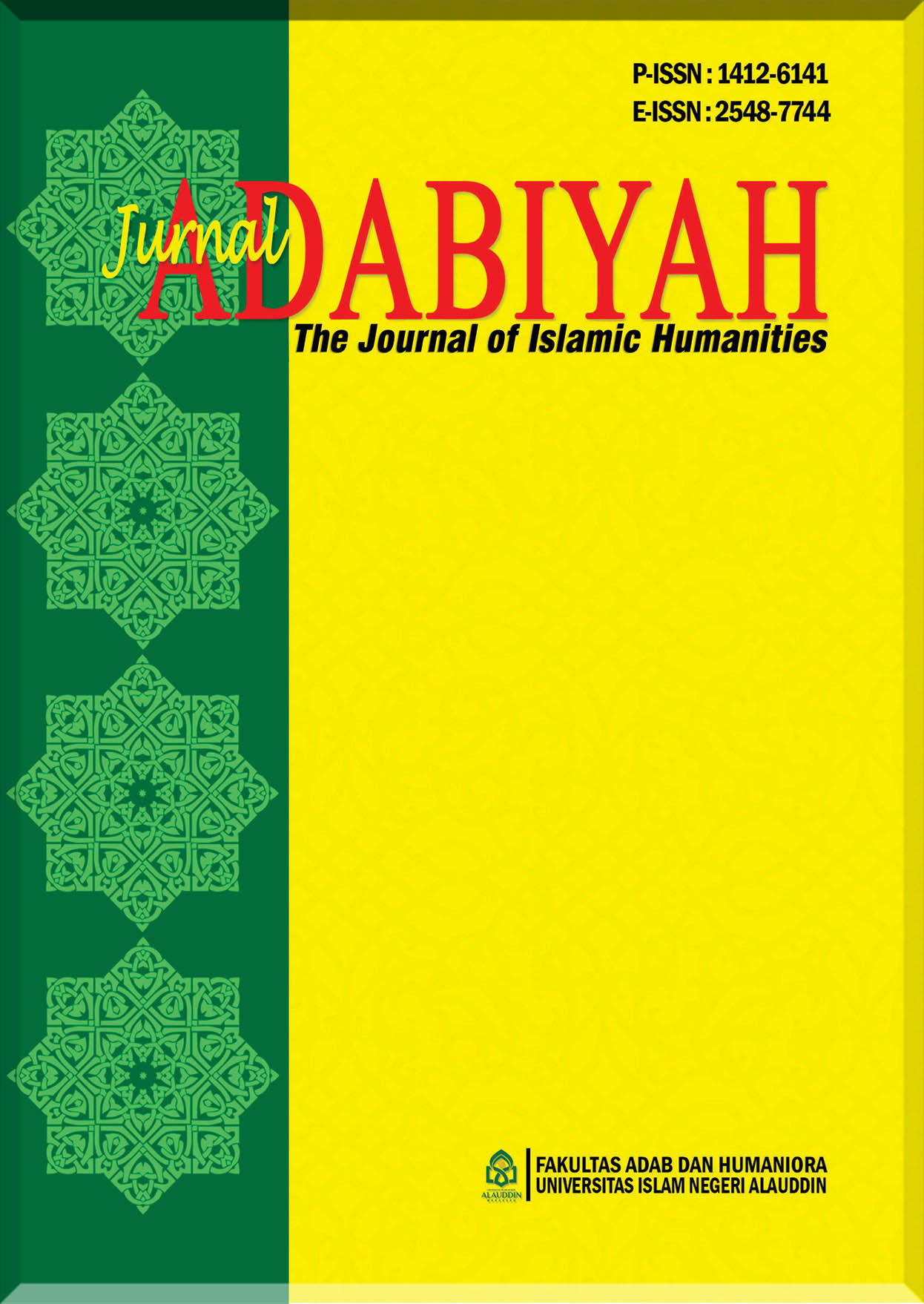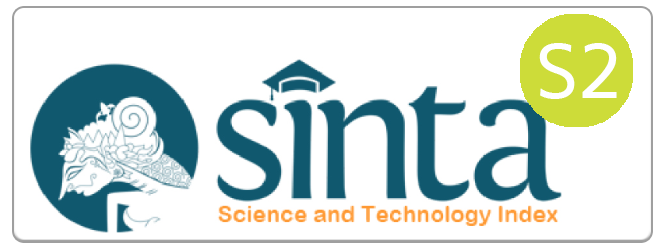Stone-Throwing Tradition and the Living Qur’an
(Analysis of Q.S Al-Ikhlas)
DOI:
https://doi.org/10.24252/jad.v25i2a1Keywords:
Al Ikhlas, Stone Throwing, Living Quran, TraditionAbstract
This study examines the practice of the tradition of throwing stones at funeral ceremonies in Landonan Bebeau Village, Central Sulawesi Province, Indonesia. This practice is carried out collectively, namely through gatherings, at certain times and places. To see how the people of Landonan Bebeau Village are involved in communicating with the Qur'an, this Living Qur'an study focuses on two important things: the practice of Surah Al-Ikhlas and the tradition of throwing stones at funeral ceremonies in Landonan Bebeau Village, as well as the nature of the tradition of throwing stones at the ceremony. This study is a field research, using a phenomenological and sociological approach, and using Living Qur'an analysis. The results of this study conclude that the practice of the tradition of throwing stones by reciting Surah Al-Ikhlas 3,333 times is intended to reward or pray for the deceased to receive rewards and be given relief from the punishment of the grave, and to foster friendship between residents. The authors discovered the rationale behind the use of Surah Al-Ikhlas in the stone-throwing tradition. It is the shortest surah in the Quran and holds significant virtues, including freedom from the torment of the grave. The authors suspect that this motivation underlies the stone-throwing tradition.
الملخص
تتناول هذه المقالة ممارسة الرجم في مراسم الجنازة بقرية لاندونان بيبو، مقاطعة سولاويزي الوسطى، إندونيسيا. تُمارس هذه الممارسة جماعيًا، من خلال تجمعات، في أوقات وأماكن محددة. ولدراسة مدى مشاركة مجتمع لاندونان بيبو في التواصل مع القرآن الكريم، تُركز هذه الدراسة، التي تُعنى بالقرآن الحي، على جانبين رئيسيين: قراءة سورة الإخلاص، وتقليد الرجم في مراسم الجنازة بقرية لاندونان بيبو، بالإضافة إلى جوهر هذه العادة. تُعدّ هذه الدراسة بحثًا ميدانيًا، يعتمد على مناهج ظاهرية واجتماعية، وتحليلات القرآن الحي. وتخلص النتائج إلى أن ممارسة الرجم، بتلاوة سورة الإخلاص 3333 مرة، تهدف إلى مكافأة الميت أو الدعاء له بالثواب والنجاة من عذاب القبر، وتعزيز صلة الرحم بين السكان. اكتشف المؤلف السبب وراء استخدام سورة الإخلاص في تقليد رمي الجمرات. فهي أقصر سورة في القرآن الكريم، ولها فضائل جليلة، منها النجاة من عذاب القبر. ويظن المؤلف أن هذا الدافع هو أساس تقليد رمي الجمرات.
Abstrak
Penelitian ini mengkaji tentang praktik pelaksanaan tradisi buang batu pada upacara kematian di Desa Landonan Bebeau Provinsi Sulawesi Tengah Indonesia. Praktik ini dilakukan secara bersama-sama yakni melalui perkumpulan, waktu dan tempat tertentu. Untuk melihat bagaimana keterlibatan masyarakat Desa Landonan Bebeau dalam berkomunikasi dengan Al-Qur’an, maka kajian Living Qur’an ini difokuskan pada dua hal penting yaitu pengamalan surah Al- Ikhlas dan tradisi buang batu pada upacara kematian di Desa Landonan Bebeau serta hakikat kegiatan tradisi lempar batu pada upacara tersebut. Penelitian ini merupakan penelitian lapangan (field research), dengan menggunakan pendekatan fenomenologi dan sosiologi, dan menggunakan analisis Living Qur’an. Hasil penelitian ini menyimpulkan bahwa dengan adanya praktik pelaksanaan tradisi buang batu dengan membacakan surah Al-Ikhlas sebanyak 3.333 kali dimaksudkan untuk menghadiahkan atau mendoakan si jenazah agar mendapat pahala dan diberi keringanan dari siksa kubur, dan guna menjalin silaturahmi antar warga. Penulis menemukan alasan di balik penggunaan surah Al-ikhlas dalam prosesi tradisi buang batu, yakni surah Al-Ikhlas merupakan surah terpendek yang ada di dalam Al-Qur’an dan memiliki fadhilah yang besar salah satunya adalah dibebaskan dari siksa kubur. Penulis menduga bahwa motivasi itulah yang menjadi dasar pelaksanaan tradisi buang batu.
Downloads
References
Qur'an Al-karim
Abdullah, M. Amin. "Islam as a Science: Epistemology, Methodology, and Ethics in Islamic Studies" (Yogyakarta: Islamic State University Sunan Kalijaga Press, 2006).
Al Munawar, Said Agil Husain."Actualization of Qur'anic Values in the Islamic Education System", (Cet. 1; Jakarta: Ciiputat Press, 2003).
An Nawawi, "Saheeh Muslim Bi Syarah An Nawawi" (4th Cet. Volume 6, Darul Hadith Al-Qahir, 2001).
Aufa Ari Abi, "Interpreting Death in Death Ceremonies in Java" An-Nas: Journal of Humanities, Volume 1 Number 1 (February,2017).
Buhori, “Islam and Local Traditions in the Archipelago A Critical Study of the Betteng Pellet Tradition in Madurese Society in the Perspective of Islamic Law", Al-Maslahah, volume 13 Number 2 (October, 2017).
Darwis, Robi. "Ngaruwat Bumi Tradition in Community Life", Religious: Journal of Religious and Cross-Cultural Studies 2, 1 (September, 2017).
Eliade, Mircea. “The Sacred and the Profane: The Nature of Religion” (New York: Harcourt, 1959).
Farhan, Ahmad, "Living the Qur'an as an Alternative Method in the Study of the Qur'an", El-afkar:Vol. 6 No. 2 (July-December 2017).
Husserl, Edmund. “Ideas Pertaining to a Pure Phenomenology and to a Phenomenological Philosophy”, trans. F. Kersten (The Hague: Martinus Nijhoff, 1983).
Masunah, "Implementas Understanding Surat Al-Ikhlas in Instilling Tawhid Values in Early Childhood", STUDIA DIDKATIKA: Journal of Ilmah Education, Vol. 10 No. 2 (2016).
Muizzah, Ummi. "The Qur'an in the Manganan Tradition in Soko Medalem Village, Senori District, Tuban Regency" Al-Itqan, Volume 5, No. 2 (2019).
Muri, A. Yusuf, "Quantitative. Qualitative and Combined Research Methods", (Cet. 5th; Jakarta, Prenadamedia Group, 2019).
Nader.“Phenomenology and the Question of Being in Islam,” “Islamic Studies” 42, no. 2 (2003).
Novia Permata Sari, "Study Living Qur'an on the Tradition of Reciting the Qur'an in the Morning and Evening Graves for Seven Days", Istinarah: Religious, Social and Cultural research, Vol. 3 Number 2 (July-December 2021).
Nurmanita, Mutiara. "The Embodiment of Cultural Values in Bedendang Tradition Through the TikTok Application as a Form of Local Wisdom in South Bengkulu", Al Ma'arief: Journal of Social and Cultural Education, Vol. 3, No. 2 (2021).
Rahman, Fazlur. “Islam and Modernity: Transformation of an Intellectual Tradition” (Chicago: University of Chicago Press, 1982).
----------------------. “Major Themes of the Qur’an” (Minneapolis: Bibliotheca Islamica, 1980).
Ramadiputra, Ade Trial. "Motifs for the Preservation of Safar Bathing in Momo Village, Momosalato District, North Morowali Regency, Central Sulawesi Province (Study of Living Qur'an)", AL-Munir: Journal of Qur'an Science and Tafsir" Volume 01, Number 1 (July 2019).
Rambe, Devi Yanti. "The Tradition of Reciting Qulhu Three Nights After the Departure of the Dead (Review of Living Qur'an Studies)", Lathaif: Vol. 1 No. 2 (July-December 2022).
Rifa'i, Moh."Perspectives on the Sociological Approach of Religious Community Studies", Al-Tanzim: Journal of Islamic Education Management, Vo. 2 No. 1 (2018).
Rijal, Syamsul. "Living Qur'an: The Actualization of Qur'anic Values in Local Tradition," "Journal of the Study of Qur'an and Hadith" 18, no. 1 (2017).
Rofiq, Ahmad. "Islamic Dialectics and Nusantara Culture", (Cet, 1; Jakarta: Kencana, 2020).
Saeed, Abdullah, “Interpreting the Qur'an: Towards a Contemporary Approach” (London: Routledge, 2006).
Shihab, M. Quraish. "Qur'anic Insights on Maudhu'i's Tafsir on Various Problems of the Ummah", (Cet. VI; Bandung: Mizan, 1997).
Sudaryono, "Research Methodology", (2nd Edition; Depok, PT Rajagrafindo Persada, 2018).
Downloads
Published
How to Cite
Issue
Section
License
Copyright (c) 2025 Ali al Jufri, Wardi Lute, Muhammad Rafiiy, Syamsuri

This work is licensed under a Creative Commons Attribution-NonCommercial-ShareAlike 4.0 International License.
COPYRIGHT AND LICENSE STATEMENT
COPYRIGHT
Jurnal Adabiyah is published under the terms of the Creative Commons Attribution license. Authors hold the copyright and retain publishing rights without restriction to their work. Users may read, download, copy, distribute, and print the work in any medium, provided the original work is properly cited.
LICENSE TO PUBLISH
1. License
The use of the article will be governed by the Creative Commons Attribution license as currently displayed on http://creativecommons.org/licenses/by/4.0.
2. Author’s Warranties
The author warrants that the article is original, written by stated author/s, has not been published before, contains no unlawful statements, does not infringe the rights of others, is subject to copyright that is vested exclusively in the author and free of any third party rights, and that any necessary written permissions to quote from other sources have been obtained by the author(s).
3. User Rights
Under the Creative Commons Attribution license, the users are free to download, reuse, reprint, modify, distribute and/or copy the content for any purpose, even commercially, as long as the original authors and source are cited. No permission is required from the authors or the publishers.
4. Co-Authorship
If the article was prepared jointly with other authors, the corresponding author warrants that he/she has been authorized by all co-authors, and agrees to inform his/her co-authors of the terms of this statement.
5. Miscellaneous
Jurnal Adabiyah may conform the article to a style of punctuation, spelling, capitalization, and usage that it deems appropriate. The author acknowledges that the article may be published so that it will be publicly accessible and such access will be free of charge for the readers.




